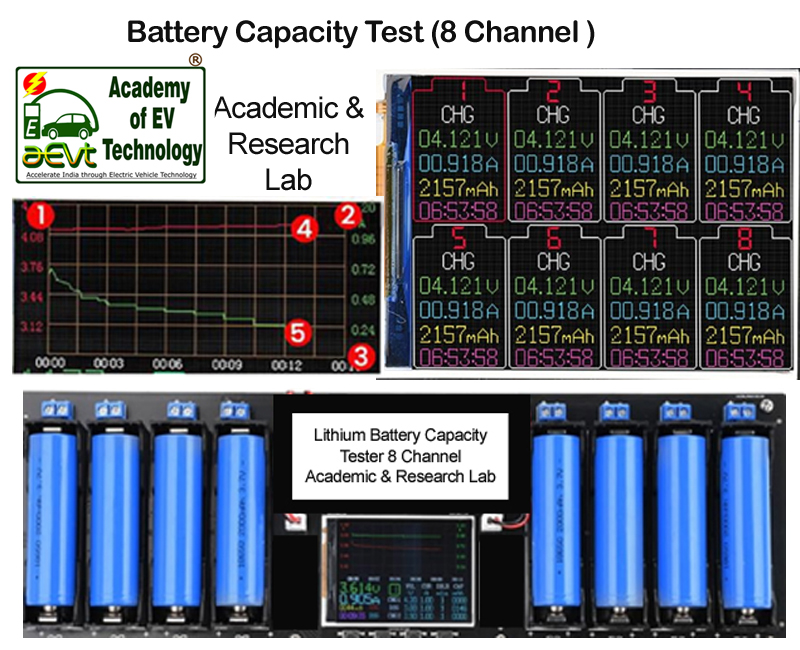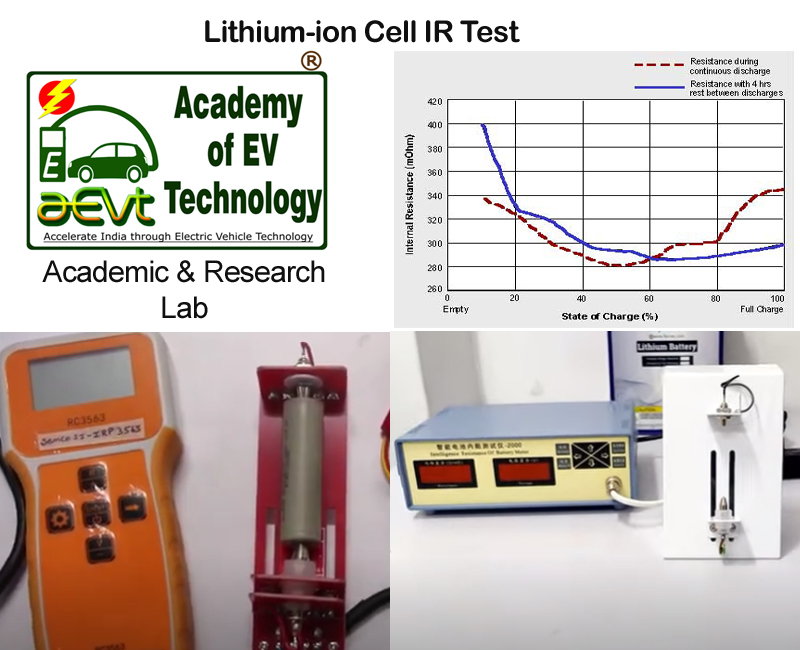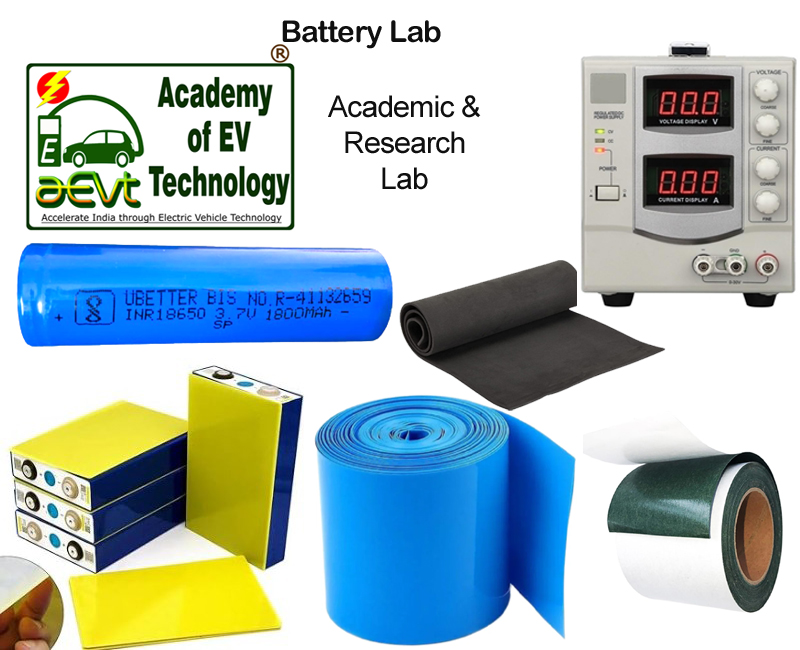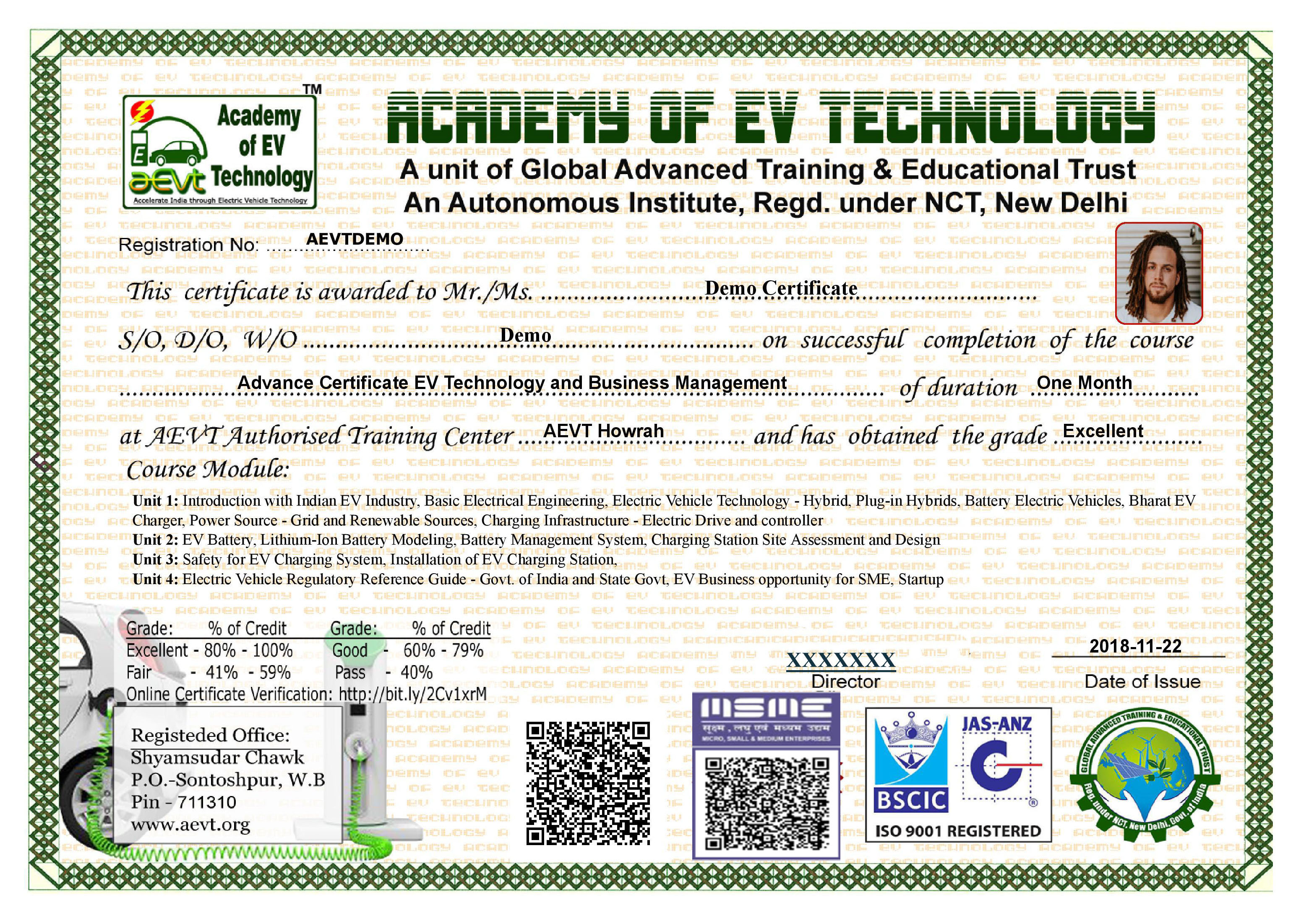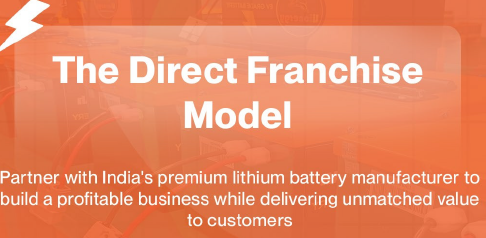MSME Govt of India Registered Autonomous institution.
Special session for working professionals, Business owners
ACC Energy Storage System Vocational Course (Online)
Course Syllabus
1. ACC Technology Overview
The Advanced Chemistry Cells (ACC) battery market is rapidly expanding, especially in India, driven by the electric vehicle (EV) and grid energy storage sectors
Topics covered:
Lithium Ion Battery Technology Overview, Battery Technology Fundamentals, Market Scenario, Battery Raw Materials and India's Position, Government Policies and Incentives for ACC cell development
Topics covered:
Lithium Ion Battery Technology Overview, Battery Technology Fundamentals, Market Scenario, Battery Raw Materials and India's Position, Government Policies and Incentives for ACC cell development
Key Learning Outcomes:
Exploring the use of ACC batteries in key sectors like electric vehicles (EVs), grid-scale energy storage, and other clean technologies. Examining government policies and incentives that drive the development and deployment of ACC batteries.2. Different type of ACC battery
Different types of Advanced Chemistry Cell (ACC) batteries include Lithium-ion (Li-ion) (and its variants like LiFePO4, LiCoO2, NMC, and NCA), Solid-State, Lithium-Sulfur, Lithium-Air, and Sodium-ion (Na-ion) batteries
Topics covered:
Battery Introduction, Battery Types, Comparison of Different Battery Chemistries, Advantages and Disadvantages of Lithium-ion vs. Sodium-ion Batteries, Composition and Reactivity of Lithium-ion Batteries, Key Properties of Lithium-ion Battery Chemistries, Lead-Acid Batteries, Nickel Batteries, Lithium-Ion Batteries, Lithium Battery Applications and Chemistries, Cell Characteristics, LFP Battery Advantages and Disadvantages, LMFP Battery and Performance Comparison, Prismatic and Blade Cells and Battery Manufacturing and Import,
Topics covered:
Battery Introduction, Battery Types, Comparison of Different Battery Chemistries, Advantages and Disadvantages of Lithium-ion vs. Sodium-ion Batteries, Composition and Reactivity of Lithium-ion Batteries, Key Properties of Lithium-ion Battery Chemistries, Lead-Acid Batteries, Nickel Batteries, Lithium-Ion Batteries, Lithium Battery Applications and Chemistries, Cell Characteristics, LFP Battery Advantages and Disadvantages, LMFP Battery and Performance Comparison, Prismatic and Blade Cells and Battery Manufacturing and Import,
Key Learning Outcomes:
Understanding the use of ACC batteries in various sectors, including electric vehicles (EVs) and grid-scale energy storage systems. Students will be aware of the latest trends, innovations, market potential, and government policies (like the India PLI scheme) driving the growth of the ACC battery sector.3. ACC battery Materials Science
The study of the materials used in batteries, such as nickel, manganese, cobalt, or iron phosphate cathodes.
Topics covered:
Studying the composition and properties of different battery materials used in ACCs, including electrodes, electrolytes, and separators. Common Lithium Ion Cell Chemistry, Cathode Material and Function, Anode Material and Function,, understand and improve key performance metrics like energy density, cycle life, and Coulombic efficiency through material selection and design. Detailed study of anode and cathode materials (e.g., LFP, NMC, LNCA), electrolytes, and separators, and their properties.
Topics covered:
Studying the composition and properties of different battery materials used in ACCs, including electrodes, electrolytes, and separators. Common Lithium Ion Cell Chemistry, Cathode Material and Function, Anode Material and Function,, understand and improve key performance metrics like energy density, cycle life, and Coulombic efficiency through material selection and design. Detailed study of anode and cathode materials (e.g., LFP, NMC, LNCA), electrolytes, and separators, and their properties.
Key Learning Outcomes:
Students will be able to explain the chemical principles behind various Advanced Chemistry Cells (ACCs) and identify and analyze the properties of materials used in anodes, cathodes, and electrolytes.4. Characteristics of advance lithium ion cells
Lithium-ion (Li-ion) cell characteristics cover fundamental electrical properties like high energy density, high voltage output, and low self-discharge rate, alongside operational aspects such as thermal behavior, cycling life, and safety mechanisms.
Topics covered:
Li-ion cells and their internal structures, lithium ions move between electrodes during charging and discharging, Electrolyte and Separator Roles, Solid Electrolyte Interface (SEI) Layer and Lithium Plating/Dendrite Formation, Electrochemical Reactions During Charge and Discharge, Lithium Cobalt Oxide (LCO) Cell, Lithium Nickel Cobalt Aluminum Oxide (NCA) Cell, Lithium Manganese Oxide (LMO) Cell, Lithium Iron Phosphate (LFP) Cell, Lithium Nickel Manganese Cobalt Oxide (NMC) Cell, Lithium Titanate Oxide (LTO) Cell, Anode Materials Beyond Graphite, Current Collectors, Separator Properties, Dendrite Formation and Battery Failure, Battery Life Cycle and Replacement, Recycling of Lithium-ion Batteries, Advancements in Lithium-ion Battery Technology, Quality and Manufacturing in Battery Production, Session Summary and Hometask Assignment.
Topics covered:
Li-ion cells and their internal structures, lithium ions move between electrodes during charging and discharging, Electrolyte and Separator Roles, Solid Electrolyte Interface (SEI) Layer and Lithium Plating/Dendrite Formation, Electrochemical Reactions During Charge and Discharge, Lithium Cobalt Oxide (LCO) Cell, Lithium Nickel Cobalt Aluminum Oxide (NCA) Cell, Lithium Manganese Oxide (LMO) Cell, Lithium Iron Phosphate (LFP) Cell, Lithium Nickel Manganese Cobalt Oxide (NMC) Cell, Lithium Titanate Oxide (LTO) Cell, Anode Materials Beyond Graphite, Current Collectors, Separator Properties, Dendrite Formation and Battery Failure, Battery Life Cycle and Replacement, Recycling of Lithium-ion Batteries, Advancements in Lithium-ion Battery Technology, Quality and Manufacturing in Battery Production, Session Summary and Hometask Assignment.
Key Learning Outcomes:
Understand the physical concepts of thermodynamics and kinetics involved in electrochemical reactions, including redox principles. Learn to select appropriate battery cells and chemistries (e.g., NMC, LFP) based on specific application requirements, such as for electric vehicles.5. Advanced materials and technologies for lithium ion cells
Identify strategies to enhance energy density, charging efficiency, and battery lifespan.
Topics covered:
Advanced Anode Materials: Silicon and Alloying Materials, Carbon-Based Materials, Li-Metal Anodes
Advanced Cathode Materials: High-Nickel Cathodes, Li-Rich and High-Voltage Spinels
Advanced Electrolytes & Separators: Solid-State Electrolytes, Electrolyte Additives, Advanced Separators
Emerging Technologies & Applications: Artificial Intelligence (AI)
Topics covered:
Advanced Anode Materials: Silicon and Alloying Materials, Carbon-Based Materials, Li-Metal Anodes
Advanced Cathode Materials: High-Nickel Cathodes, Li-Rich and High-Voltage Spinels
Advanced Electrolytes & Separators: Solid-State Electrolytes, Electrolyte Additives, Advanced Separators
Emerging Technologies & Applications: Artificial Intelligence (AI)
Key Learning Outcomes:
Outcomes typically include the ability to analyze and potentially design advanced anode and cathode materials, understand electrolyte functions, grasp strategies to prevent issues like dendritic growth and thermal runaway, and use electrochemical techniques for battery characterization and analysis6. Lithium-ion Cell Architecture
Lithium-ion Cell Architecture includes an anode, cathode, separator, electrolyte, and current collectors. The anode and cathode store lithium ions, the electrolyte facilitates ion transfer, the separator prevents short circuits, and the current collectors enable electron flow.
Topics covered:
Types of Cells, Cell Construction and Differences (cylindrical, pouch, prismatic, coin, or button), Internal Components and Assembly, Cylindrical Cell Casing, Anode (Negative Plate), Separator, Separator as a Safety Device, Cathode (Positive Plate), Electrolyte Injection, Electrolyte and Lithium Salts, Protection Vent and Safety Features, Current Interrupt Device (CID), Positive Temperature Coefficient (PTC) Device, Cell Casing and Additional Safety, Scalability and Cost of Battery Manufacturing, India's Manufacturing Growth, Global Business Dynamics and Dependency, Hometask Assignment.
Topics covered:
Types of Cells, Cell Construction and Differences (cylindrical, pouch, prismatic, coin, or button), Internal Components and Assembly, Cylindrical Cell Casing, Anode (Negative Plate), Separator, Separator as a Safety Device, Cathode (Positive Plate), Electrolyte Injection, Electrolyte and Lithium Salts, Protection Vent and Safety Features, Current Interrupt Device (CID), Positive Temperature Coefficient (PTC) Device, Cell Casing and Additional Safety, Scalability and Cost of Battery Manufacturing, India's Manufacturing Growth, Global Business Dynamics and Dependency, Hometask Assignment.
Key Learning Outcomes:
Apply knowledge to design and develop efficient, safe, and sustainable battery solutions for industries like electric mobility and energy storage.7. Battery Management System (BMS)
Topics covered:
Battery Management System (BMS), BMS Role in Electric Vehicles (EVs), Core Functions of BMS, Types of BMS, Key Functions of BMS: Protection, Cell Balancing, Monitoring, Communication, Customization of BMS, BMS Customization and Market Competition, Comparison of European and Chinese Technology, BMS Core Functions, Cell Imbalance Issues, Thermal Runaway Scenario, Necessity of Cell Balancing, Constant Voltage Charging and Balancing, Active Cell Balancing, DC-DC Converter Functionality, Comparison of Balancing Methods, Battery Pack and BMS Integration, BMS Operating System, Advanced BMS Functions, Battery System Control Unit, Real-Time Operation and Safety Unit, Secondary BMS Functions and Interlock System, Benefits of an Advanced BMS, Centralized vs. Distributed BMS, Protection Circuit Board (PCB) vs. BMS, BMS in Series and Parallel Connections, Battery Pack Design Considerations, Battery Thermal Management and BMS Integration, Cost and Market Considerations, Challenges in Indian Development, Home Task BMS Datasheet analysis
Key Learning Outcomes:
Understand the basic components, architecture, and functional blocks of a BMS. Learn how to monitor, estimate, and protect batteries, including cell balancing, State-of-Charge (SOC) and State-of-Health (SOH) estimation, and thermal management. Apply BMS knowledge to design, implement, and troubleshoot systems for electric, hybrid vehicles and renewable energy storage battery design.8. Battery Thermal Management System (BTMS)
An electric vehicle's battery thermal management system (BTMS) is crucial for maintaining optimal battery performance, safety, and lifespan. It regulates the temperature of the battery pack, preventing overheating or overcooling by utilizing cooling and heating systems.
Topics covered:
Thermal Management Overview, Lithium-ion battery optimum temperature, Importance of Temperature Control, Thermal Runaway, Sources of Temperature Instability, Non-uniform Aging, Heat Generation and Dissipation, Types of Thermal Management Systems, Air Cooling System, Liquid and Refrigerant Cooling, Refrigerant cooling, Phase Change Materials and Comparison, Home Task.
Topics covered:
Thermal Management Overview, Lithium-ion battery optimum temperature, Importance of Temperature Control, Thermal Runaway, Sources of Temperature Instability, Non-uniform Aging, Heat Generation and Dissipation, Types of Thermal Management Systems, Air Cooling System, Liquid and Refrigerant Cooling, Refrigerant cooling, Phase Change Materials and Comparison, Home Task.
Key Learning Outcomes:
Identifying and selecting appropriate components for a BTMS, including fans, pumps, heat exchangers, and controllers. Learners will understand the purpose and operation of components in air and liquid cooling systems for battery packs.9. Lithium-Ion Cells Battery Test
Tariff Based Competitive Bidding Process for Procurement of Power from Grid Connected Solar PV Power Projects.
Topics covered:
Battery Validation Lab, Battery Cell Testing - Lithium-ion Cell actual capacity test, OCV and IR test, BMS Test, Thermal Cycling Test, Over-charging test, Bureau of Indian Standards (BIS) tests, How to get a BIS certificate,
Battery Repairing - Steps to test Battery health, IATA Lithium Battery Safety Regulations (LBSR) 2025, Lithium Battery Testing Standards
Topics covered:
Battery Validation Lab, Battery Cell Testing - Lithium-ion Cell actual capacity test, OCV and IR test, BMS Test, Thermal Cycling Test, Over-charging test, Bureau of Indian Standards (BIS) tests, How to get a BIS certificate,
Battery Repairing - Steps to test Battery health, IATA Lithium Battery Safety Regulations (LBSR) 2025, Lithium Battery Testing Standards
Key Learning Outcomes:
Learn various performance tests for battery cells and modules, such as those measuring capacity, voltage, and internal resistance. Enable learners to apply their knowledge to improve system performance, drive better design decisions, and ensure compliance in the energy storage market.10. Battery Module / Pack Design
A lithium-ion battery module or pack design involves strategically arranging individual cells into modules, and then connecting those modules to achieve the desired voltage and capacity for a specific application. This design process considers factors like cell type, cooling, safety, and overall system integration.
Topics covered:
Pack Design Steps, Identify Application, Choose cell chemistry, Series –parallel configuration, Choose required BMS, Choose TMS, Choose Pack cabinet and other parts and equipments, Pack Technical Specification.
Battery Pack Cells configuration, Basic calculations that are used in battery design, Case study of different OEM battery, Module BMS connection, Custom Battery Packs - Customization Process, Collaboration between OEMs and suppliers for an optimal battery pack design, Home Task - Battery pack design, SORT analysis document.
Topics covered:
Pack Design Steps, Identify Application, Choose cell chemistry, Series –parallel configuration, Choose required BMS, Choose TMS, Choose Pack cabinet and other parts and equipments, Pack Technical Specification.
Battery Pack Cells configuration, Basic calculations that are used in battery design, Case study of different OEM battery, Module BMS connection, Custom Battery Packs - Customization Process, Collaboration between OEMs and suppliers for an optimal battery pack design, Home Task - Battery pack design, SORT analysis document.
Key Learning Outcomes:
Choose the right cell chemistry, form factor (cylindrical, prismatic or blade), and capacity based on the specific application's requirements. Identify and understand the role of components like cell holders, bus bars, insulators, and heat sinks in module construction. Evaluate the design's performance under different operating conditions.Quick Inquiry Form

Interactive Session

Practical & Doubt Session

E-Library Study Materials

Online Evaluation




